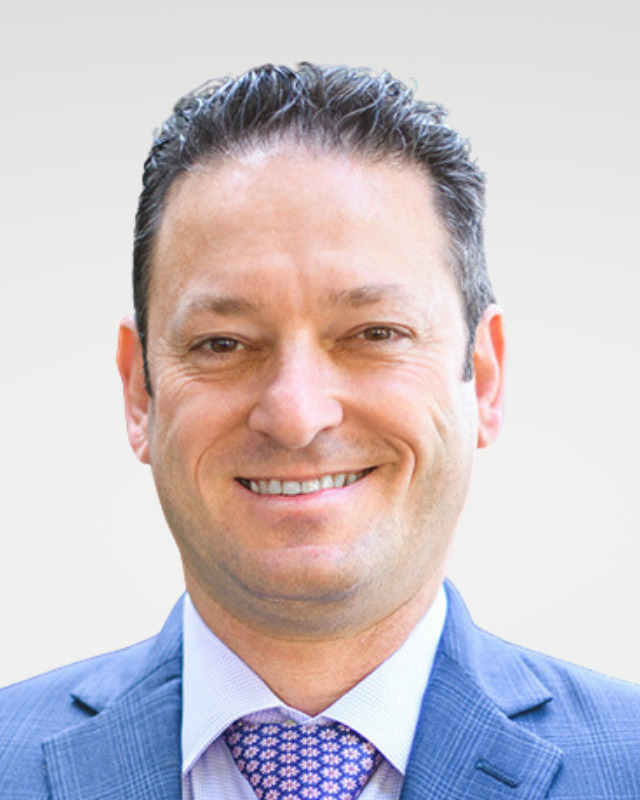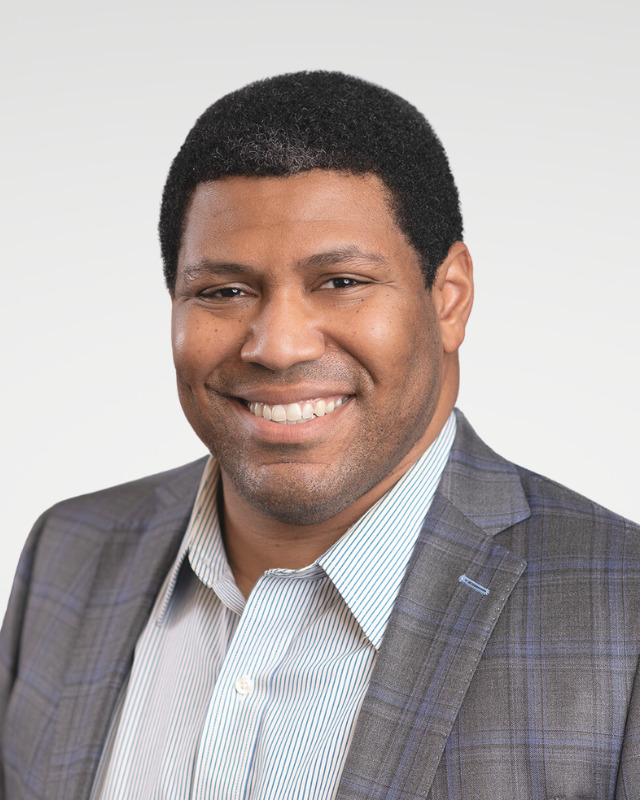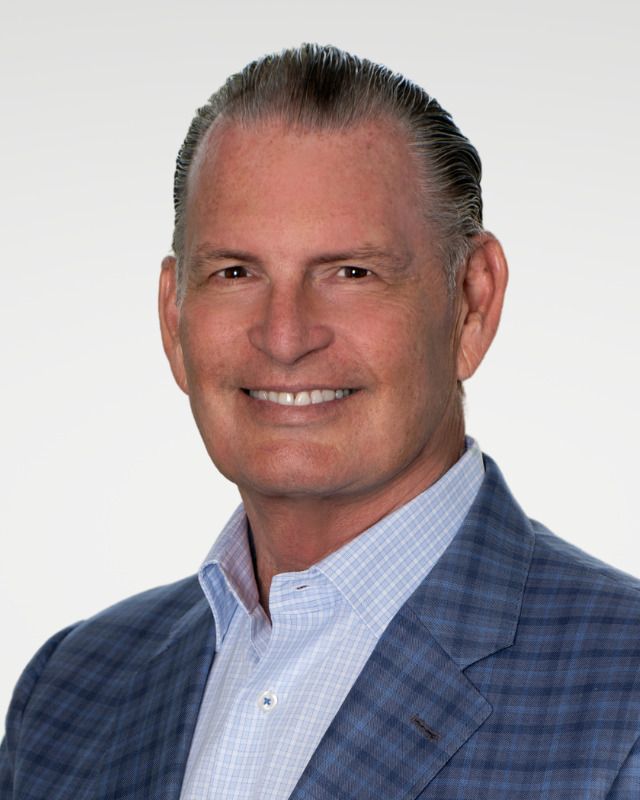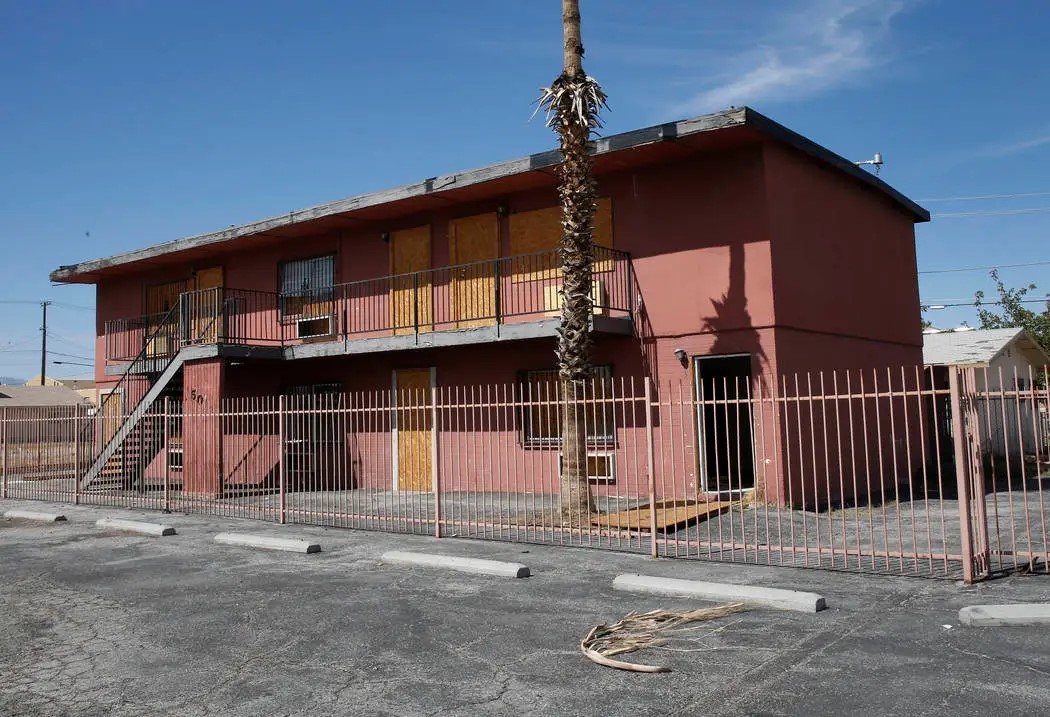Financing Deals in an Uncertain Climate – Speakers Series
Watch VideoTraditional and non-bank lenders as well as capital advisors discuss financing today’s deals. Where is capital looking and where is the market headed? In today’s uncertainty, where do the opportunities lie? This Speakers Series course provides insight into the state of the industry and where commercial real estate financing is headed.
*Course content was developed from Connect Orange County 2023, a live in-person event that occurred on September 27, 2023.
Course Information
- Instructor Contact: [email protected]
- Estimated time to complete course: 1 hour
- Course format: Online
- Course type: Video
- Credit: None
- Course Access: 1 year from date of purchase
- Course Progression: This course is set to freeform which allows the user to move freely through the videos without following a designated step sequence.
Lesson 1: Panel Discussion 1 Introduction/Debt and Interest Rates
Moderator William Ahern Esq. [00:00:00] Good afternoon, everybody. Let’s take a minute and introduce around the panel. Bali, I’ll start with you. You give the audience an introduction talking about Pace.
Bali Kumar [00:00:09] Bali Kumar, Chief Operating Officer of PACE Loan Group. We are a direct national space lender, so we land on deals nationwide from new construction, gut rehab, adaptive reuse, even simple renovation projects.
Moderator William Ahern Esq. [00:00:25] Great.
Antonio Hachem [00:00:25] Antonio Hachem, Slatt Capital. I’m getting thumbs up from the bank. Mortgage Banker, Structured finance, debt equity, the full cap stack based in Los Angeles. Happy to be here. Happy to share our knowledge with you, intimidated by seeing so many young people.
Gary Bechtel [00:00:48] So now that’s a good thing. I’m Gary Bechtel. I am CEO of Red Oak Capital Holdings and OGC Real Estate Partners, an affiliated entity or a multi fund manager. We raise and deploy capital in bridge loans. These are one, two, two, two, maybe three year fully extended loans on generally transitional real estate, kind of 2 to $20 million nationwide core asset classes. Yeah.
Kristen Croxton [00:01:17] Hi, I’m Kristen Croxton with Capital One. I’m a senior vice president in our Newport Beach office here. I run that with my partner, Greg, who’s somewhere around here. We primarily focus on multifamily and your Fannie Freddie FHA products also have a balance sheet that we use for construction, bridge lending of multifamily, industrial, some other property types depending on the time of year that we’re looking at it. So that’s it.
Moderator William Ahern Esq. [00:01:40] Perfect. So I thought we take this opportunity to talk about debt first and then we’ll move into equity. And then if we have some time, we’ll talk about maybe other market disrupters and how you keep your team engaged and save a few minutes for questions from the audience. So I guess we’ll start off with just interest rates. I mean, we were coming off historic lows, had, you know, over 18 months of rate hikes. Do you think the Fed is close to being done? They just are more room to raise or what do you think they’ll they’ll pivot positively. Sure.
Antonio Hachem [00:02:16] All right. Well, I hope that they don’t raise rates. Would you agree? We’re not counting on it. We’re following the indications and signs. That’s going to be one more rise in interest rates. Nobody has a crystal ball. We really hope that next year things will soften. And depending on most folks that talk about the election year being a influence around that, I don’t know how, but we really hope that they don’t raise them. I personally hope we don’t raise them perfect.
Bali Kumar [00:02:53] I think the Fed has been very consistent with their forward guidance. And so I think we should believe they’re forward guidance. And so if they say that, you know, there may be one more interest rate hike coming down the pike this year, we should believe that and we should plan for it again. I mean, obviously, I also don’t hope that they raise rates, but we are where we are and everybody everywhere is just saying like we used to think like things were going to start ticking down and don’t worry, we’re going to get back to what we’re used to. But like, we may never get there, right? This might have been a just a generational thing. And so everybody just needs to get used to higher for longer and plan for it and underwrite to it. And if your deal works, great, and if interest rates drop, your deal is even better. But like the hoping and praying go for Gary. I know you’ve got thoughts now.
Gary Bechtel [00:03:45] I think there’s one more raise in it, and I think you’re going to be in the same interest rate environment for probably at least in the next 12 to to 15 and maybe as long as 18 months. I don’t see at the earliest I see tapering maybe in Q4 of next year at the earliest. Set aside the the election. I mean, funny things happen during an election cycle, but I just don’t see with the message that the Fed has continued to send, I don’t see a big softening in rates until they’ve squashed inflation. And unfortunately, the only way they’re going to squash inflation is for the for the consumer to stop spending, which to a certain degree is going to be around employment. So you’re going to need higher unemployment to stop people from spending, which isn’t a good thing. Right? That puts a lot of people out of work. But I think you’re going to get to your point badly. I think you’re going to have interest rates for longer. I think I think this is what we’re going to have for a while.
Kristen Croxton [00:04:37] And I don’t have anything else that I agree exactly with Gary saying.
Moderator William Ahern Esq. [00:04:41] Okay, so just maybe the I mean, do you think at the current rates, it sounds like this is to you you’re thinking the new normal, at least for the foreseeable future, do you think? I know the Fed was always trying to stick to soft landing, which I think is I think people are thinking less and less able to pull off. Do you have any do you have any views on that?
Bali Kumar [00:05:01] I don’t know. I mean, it’s what they’re. It’s what they’re aiming for. If they do it, that be great. Plan for the worst. It’s it’s really remarkable right now that we have such high interest rates and such low unemployment, and that can’t last forever.
Antonio Hachem [00:05:21] I would like to add. Normally spreads go hand in hand with rates. And in the past, when there was a healthier normal fluctuation and indexes and and and treasuries, the spreads would adjust accordingly. They would wait a week or two before kind of adjusting spreads. So the lenders remained competitive in this environment. It is so unpredictable. Therefore, there has not been any adjustment if. Interest rates stop rising. I can agree that we’re in the new world. We’re not going to go back to the low, you know, low threes in three years. Rates. Spreads will adjust. Ultimately, the money’s coming in form for, for example, life insurance companies. They’ve got premiums coming in. Money’s coming in. They need to deploy it if deals don’t work. And we’re going to get it more into structured finance and other topics. But if deals don’t work, they will need to adjust because they have to meet their long term obligations. So they need to put the money out. In my opinion, spreads will adjust downwards in Q3, Q4.
Gary Bechtel [00:06:40] How low can they go? I mean, I remember back in the eighties and nineties we were sub 100 on a live company spreads. Do they go that low.
Antonio Hachem [00:06:49] If they get the return and the deals work, maybe. I mean we’re at 150 now for best in class. I would say 150 spread now for best best in class go up to two or 50 I would say on on permanent debt. Yeah. I mean, we’ve seen subo even two or three years ago for the best in class deal. So I don’t see that being a possibility.
Kristen Croxton [00:07:18] I think also that you have to see alternative investments changed, too, Right? Because that’s where they’re putting their money right now. So.
Gary Bechtel [00:07:24] Yeah, I mean, life companies, to your point, are barbell right there in the bridge dining space. We’re now seeing a lot of companies come in and do 3 to 5 year loans to barbell against their longer term, lower your lower yielding maturities, you know, that are offsetting their their insurance company balances So. So I’ll take the other view. Right. I’ll take the other view that forget a soft landing. I think we’re already in a recession or mild recession. I’ll bet. If you look at the primary indicators historically that have indicated we’re in a recession, it’s a Treasury over our ten year Treasury over 3%. What are the Treasury ten year Treasury hit yesterday? It hit like 486. Right. So clearly, it’s way over 3%. Right? We’ve got the lowest unemployment that we’ve had, but we also have the lowest labor participation rate this country has ever had. So it’s it’s somewhat misleading. And the other thing is you’ve got to you know, the other thing that leads to a indication of a recession is a inverted yield curve. We are completely inverted on the yield curve. The two year Treasury yielding way more than a ten year Treasury. So if you look at all those factors, even though we’ve got strong, you’ve got, you know, low unemployment, we’ve got strong consumer spending. But I will add, you’ve got strong consumer spending, but you have declining savings rates and increasing credit card rates. So people are spending beyond their means. They need to stop. If the Fed ever hopes to crush inflation. So I think soft landing, we’re already in a mild recession.
Moderator William Ahern Esq. [00:08:51] That I was.
Gary Bechtel [00:08:52] Just sorry to be the pessimist, but I’d rather be a real.
Lesson 2: Panel Discussion 2: Finance and Funding
Moderator William Ahern Esq. [00:08:54] As well as listen, the news this morning, I guess credit card applications are starting to get declined at record rates, so maybe there is some consumer pullback. So I guess, you know, for some of my clients right now are having trouble finding finance, you know, debt financing, who’s who’s still active in the market right now. What life companies. That funds banks?
Antonio Hachem [00:09:19] Well, I would partially agree with my friendly colleagues from the previous panels we attended craft Western States and Las Vegas a couple of weeks ago, and it is the event on the Western and the western U.S. where lenders come out, come out and say, here’s what we’re going to roll out for the next year and this is the last push for this year. And then two weeks after the event, they readjust after having learned what everybody else wants to do. So 30 meetings, speed dating back to back. One lender, one life insurance company exceeded its allocation by I mean, they they got 3.4 billion out the door and there were 3 billion budgeted another life. KO billion seven. Everybody else was short. Everybody else looked at deals, maybe quoted, maybe did in quotes, and they were in asset management mode. So I would agree with my friendly colleague earlier that the open shops, the typical big life insurance companies above 20 million were not quoting or if they’re quoting, they’re really conservative and they were wide. However, the closed shops and that is the life companies don’t work with correspondents such as ourselves. We service no laws. Those loans for them. They picked up all the business that the banks just could not do. After the whole hiccup with SVP and the whole bank debacle and depositors. So they’ve been putting money like there’s no tomorrow they want to do in 2024 more than what they did in 2023. And these are average 7 million loans. So you put 3.4 billion on 7 million average. You can imagine it’s like a conveyor belt, it’s process. So these are life company loans, retail or mom and pop retail, some office. We’re not talking class A multi. They will not win those deals and there’s plenty of appetite for them. So do not be discouraged. There is hope out there. The one challenge is that the last few years, whether it’s a life or whether it’s a debt fund, folks struggle to put out dollars. It was a chase to the bottom. Today, they are taking advantage of the situation. By being a supply demand lender. After meeting our location, they’re saying we don’t need to do more business this year because we’re going to have to beat it next. So they’ll price it wide. I mean, why Dwight Like 100 basis points wider. I see hope three five year money out the window because the banks dropped the ball. We could not quit any three and five year money with life insurance companies anymore for the rest of the year. And as of now, we can’t. January, the floodgates opened up again, so they would pick up all the business that the banks are not doing. The banks that want your deposits. I’m not opposed to that. You should have deposits at the bank and establish rapport. But if you’re not that lucky, I’ll stop.
Kristen Croxton [00:12:30] I was just going to say I agree with what Tom said about deposits as a as a bank. You know, on the balance sheet side, the more deposits you can bring, the more the doors open. Obviously, we’re not going to able to do everything, but for sure, the deposits is key. And then as far as the multifamily side, Fannie and Freddie are super busy right now. I mean, it’s been a slow summer, but they are definitely picking up. They have a lot of money. They still want to get out. Five Your money still works on the Fannie, Freddie fixed rate stuff. If you’re green, if you want to go green, that gets you pricing benefits for anything. That’s mission rich in the Fannie Freddie world, depending on where you are, 80% to 120%. AMI, it’s going to give you big pricing breaks. So there’s still a lot of money on that side to get out.
Gary Bechtel [00:13:10] So it’s interesting, right? So I’ve been in this business since 1986, so I’m seasoned. Not old. Yeah, but you, you, you know, I’ve been through a number of these cycles, right? So you always see it. History always tends to repeat itself, right? So when you get some kind of market dislocation to use a kind word, which is what we’re in today, the traditional lenders. Right. The banks, the life insurance companies, the credit unions, the pension funds, etc. are contract. And so and pricing goes up because there’s less capital in the market, especially lower priced capital, which is what the banks in the life companies generally provide. And that void is filled by the alternative lending space, non-bank lenders, debt funds. Take your pick. Right. Which is a business that I play in today, right? I started my career on the life company side and slowly came over to the dark side over the last few years. So to answer your question, is there money in the system? There’s a tremendous amount of money in the system. The pushback that a lot of borrowers have today is there’s a tremendous amount of money in the system, but not at the rates that they want to pay. Right. So we’re we’re busier than we have ever been. Write our businesses up literally almost 100% year over year from the inbound deal flow that we see. Right. So we’re seeing deal flow. The problem is that rates have gone up because, you know, our investors are now demanding a much higher rate of return on their money because they’re investing in alts. Right. They’re not no longer they’re looking at five now. They want eight. Right. So our rates have gone up. So there’s money in the system. There’s a tremendous amount of money in the system, but at a much higher rate than borrowers, at least at this point in time, are willing to accept because they got used to the drug of 3% money. Well, that crack is gone. Right. So so now you have to have other some other, you know, higher priced drug, as it were. So to answer your question, there’s plenty of money in the system, but there is a disconnect. There’s a bit of a gap between what borrowers are willing to pay today that’s going to change and what they were paying 6 to 12 months ago.
Bali Kumar [00:15:15] Good. I was also going to say like relative strength of borrower matters. So I’m seeing a lot of deals get done. Let’s say like I have a developer in Lansing, Michigan, and obviously at a huge bank, he means nothing. But at like the smaller banks that he works with, he means so much that they they will bend over backwards to get him money for all of his deals. And so, like, I think they’re also, you know, some people you put in a few million dollars into someone’s bank, like suddenly they’re open for business for you and then for some folks, you know, and, you know, for some folks, you know, you’re a billionaire. And so just like the client relationship matters more than anything else. But then the relative billionaires are like the people who are worth a couple million and are doing some deals in like a local region. Like they’re they’re finding that banks are open to business for them to.
Lesson 3: Panel Discussion 3
Moderator William Ahern Esq. [00:16:07] Talk about like who, you know, financing. You know, I understand that you know, best projects, best locations, what type of projects or what what are the banks and the lenders looking for as far as the projects to lend on right now? What types of projects sponsors is are market developing with the banks for like a percentage of the loan for deposits are required from the I mean which I understand are quite high right now. So is what are you guys seen as far as the projects that are attractive for you to lend on?
Antonio Hachem [00:16:39] Me start. I would say multifamily is still the favorite. At some point I would say self-storage and industrial got in front now. Multifamily is still the favorite asset type. Industrial is second. Self-Storage. I like the grocery anchor retail. I would say that follows. And then self-storage shadow anchored retail a little bit less. I would say medical office is surprisingly not on the top of the list. You would need long term credits and close to a hospital set up. My regular office is out of luck. That’s been really tough. And, you know, talking to banks and life coaches that say we will do office for the right reasons, sponsor location, leverage, 50%, etc., etc., occupancy. And then we say that’s exactly what you told us. All the boxes checked. Got it. And crickets. It’s been tough. So office has been really difficult. I would say that’s as far as asset type. We would need ours. By the way. I would go on for hours. So interrupt me, please. I don’t want to be rude and take over. Take take time from my colleagues. The I think whether it’s a bank life code, that fund, they are way more lenient and open to to creative structures because deals don’t pencil. They’re open to space. They’re open to and be structures. They’re open to preferred equity coming in and sub debt. So I think in this environment, we can’t afford not to be creative. And as my colleague said earlier, go wide. I would say go wide with an advisor. So you’re actually represented, but go wide because really you need all kind of alternative and options to make a deal happen. I don’t take credit for the term, but equity is what I heard. I don’t I don’t take credit for it.
Gary Bechtel [00:18:55] So I will talk about this later.
Antonio Hachem [00:18:57] But this is the new thing where today the people, you know, my team and I, I joined Slat last October knowing it’s not forever, but we came from George Smith Partners. We were purely structured finance shop and we did everything from A to Z and we would tell people, you know, we do a structured finance and say, What is that? And we would explain it so that a, B, mass sub debt pref, you name it, all of the above space and you know, tax credits, all of that falls under one umbrella there. They get used to the term equity equity. So and I’ll let them I’ll take away from them describe it so.
Gary Bechtel [00:19:36] All us all opine right so the original question was what are banks doing? So banks historically right, have always been relatively conservative, not as conservative as life insurance companies, but, you know, very conservative. So today, I don’t know that you get a deal done with a bank without a without some kind of depository relationship either. You’re already got one. You could speak of this. You’ve already got a depository relationship with the banks that are servicing their client, or you’re going to in exchange for getting a loan from a bank, you’re going to make a substantial deposit. You’re basically borrowing your own money, right? Great. How that works.
Kristen Croxton [00:20:07] With the money somewhere.
Gary Bechtel [00:20:10] You know, on our side of it, Right. So on the alternative lending, on the non-bank lending side, we continue to look at deals, even office deals, on a very, very select basis, even hospitality deals on a very, very select basis. So you can’t, in my opinion, you can’t make a broad brush statement that we’re not doing office, we’re not doing hospitality, we’re not doing retail because it’s market by market, asset class by asset class. What I want to be a lender of class, a high rise office in downtown San Francisco. Absolutely friggin not. That is a bloodbath and will continue to be a bloodbath. And you can add in hospitality and retail to that bloodbath in San Francisco. But there are certain markets that are extremely strong and we’re continuing to look at opportunities, albeit on a more conservative basis. Right. We’ve got to be prudent with our money, our investors money. But there are opportunities out there on almost every asset class in almost every market. But you got to do your diligence. You got to you got to dig under, you know, into the deal and into the market and find out what’s going on in that asset class. But there’s absolutely opportunities. So in relation to your your equity, right. I think we’re going to touch upon this later in the conversation. But so one of the reasons that we’re able to win a lot of business and one of the reasons that we’re so busy today is right, we’re a debt fund, we’re providing bridge capital, we’re borrowing money on transitional real estate. So in a lot of cases, what you see today is a borrower either doesn’t have the ability or doesn’t want to put in the amount of capital, the amount of equity that’s needed to build a project, especially these heavy lift transitional conversion. Real estate projects. So with that in mind, under a couple of our programs where we provide within the debt structure and equity component. So what am I doing? I’m providing equity within debt to equity. Right. So we’re doing you can call them a stretch senior. That’s the traditional word for it. The equity is just a cooler word, right? But but you’re going to have to get lenders are going to have to get creative in helping borrowers navigate the environment that we’re living in today, which most yields or debt service coverage is constrained versus loan to value constrained, which is the environment we’ve lived in for decades. For all intents and purposes, Right. So if a deal is debt service covers the terrain, you can’t get to the dollars and you’re limited. You’ve got to layer in either outside with a message piece or press equity or, you know, go out and raise more money, or you get a lender like Rito who can provide that equity component within their debt structure, again, a stretch senior or equity. So there’s the there’s the genesis of the work.
Kristen Croxton [00:22:40] And you guys covered it.
Bali Kumar [00:22:42] I was going to say granularity like, I feel like this is where underwriters are really making their money because back in the day, like every deal penciled in. So you can be anybody can be underwriter. But like now, like you’re saying, you know, not all of deals are trash, but like some, you know, find the good ones and underwrite the good ones. Like there are good office deals out there. We’re looking at, you know, a select few office deals that we think are actually great deals. Obviously, underwriting them conservatively, lower leverage. But like we’re not close to anything, but the underwriters are really like separating the wheat from the chaff. And gone are the days where every deal is a good deal gone. I also think gone are the days where every multifamily deals a good deal like there are. There are. I don’t know if I want to say this, but there might be an office deal that’s better than a multifamily deal if the office deal is in place. A in the multifamily deals in like place. So I think this is where we really start to get granular and this is kind of where leg lending is fun because when every deal is a good deal, it’s like snooze money, snooze next deal.
Gary Bechtel [00:23:49] Well, again, because I’m seasoned, not old. This is one of the most confused markets. I’ve seen it. People just don’t know where the market’s going, right? We don’t know where rates are going. We kind of know where we think we know. And we have as lenders or as, you know, intermediaries, we have to kind of predict because we’re sizing our exits two, three years, five years in the future. So we’ve got to throw a dart and take a guess at where we think they’re going to be so we can underwrite our exit accordingly. But but there’s so much confusion in the market with where values are. You know, are we in the top of the cycle, bottom of cycle? You know, you want to catch a falling knife, as the saying goes. But it’s it’s really an interesting time. I mean, the other thing which maybe we’ll talk about, you talk about in underwriting, right. I’ve never seen in all my years in this business. Right. Where in some cases you’ve got expenses increasing at a faster rate than rents or you have actually have negative net operating income growth. Oh, and you’ve got a rising cap rate environment. So what do you have in three years time? You could have a lower value in three years than you have today. How the hell do I underwrite a loan to that? It’s crazy.
Antonio Hachem [00:24:56] And how do you refinance the three and a half percent rate today in three years?
Gary Bechtel [00:25:02] You don’t. That’s where you’re going to have white Knight and rescue capital coming in.
Lesson 4: Panel Discussion 4: PACE and Commercial Real Estate Financing
Moderator William Ahern Esq. [00:25:05] The equity or debt or that. Well, we’ll talk about pricing in a minute. But Bailey, won’t you tell us a little bit about your your company and pays financing it? Something that I wasn’t familiar with before a few weeks ago.
Bali Kumar [00:25:21] All right. Audience, Audience participation. Raise your hand if you have not heard of space. That is shocking. All right. Well, normally everybody handles everybody’s hands. Go up.
Moderator William Ahern Esq. [00:25:33] We’re still going to let you answer, so don’t worry.
Bali Kumar [00:25:35] Fair enough. All right.
Moderator William Ahern Esq. [00:25:36] We have a shy audience.
Bali Kumar [00:25:37] It’s basically space financing. Yeah, space financing is generally it’s just commercial real estate financing. Every state that has case financing has it pursuant to their own property, assessed Clean Energy Act, right pace. Most states only allow commercial. A couple of states allow residential. Let’s just ignore residential for now. But 39 states have passed pay statutes, so it’s not everywhere, but it’s in like most places. Pace is an assessment. So property assessed, clean energy. What that means is it generally goes on the property tax bill as a special assessment. So like sewer assessment, water assessment based assessment at the law on taxes, it gets paid back. So we lend the money, it goes in the property tax bill, the Treasurer collects it and they remit our portion to us. So for us, it’s a super secure loan because we get paid back first for senior lenders. And so whenever we’re doing a deal, typically it’ll be like maybe it’s like 55% senior. 15% pays and 30% equity piece is generally cheaper than pref, cheaper than mezz. So people are inserting it into deals nowadays because they want to decrease the overall cost of capital for the deal in a more frothy market. Senior lenders are coming in at 70. We were coming in at 15 and they were coming in with 15% equity. So it was like an equity reducer and we say and IRR juicer, but now we say it’s like a cost of funds reducer and IRR juicer. And so that’s basically what we do. We do construction financing. So we come in, I mean, there’s a lot of senior lenders that are doing construction financing that’s like prime plus one and a quarter, and we’re cheaper than that. So we can blend the cost of capital down on all sorts of deals.
Moderator William Ahern Esq. [00:27:37] What is the what is the term of the typical term of the financing?
Bali Kumar [00:27:41] Typically, it depends state by state, but up to 30 year fixed interest non-recourse financing.
Moderator William Ahern Esq. [00:27:48] And it just it travels with the property. So when it’s sold, it just stays on as a tax assessment.
Bali Kumar [00:27:53] It runs with the land.
Moderator William Ahern Esq. [00:27:54] Okay, perfect. And do you have any approval rights over buyer? Like a new buyer and a transfer? No, no. Perfect.
Kristen Croxton [00:28:03] All right, well, great. Can I ask the question to you? What. What are the requirements for the builder to do to qualify?
Bali Kumar [00:28:07] So every state slightly different, but generally anything that’s mechanical, electrical, plumbing or on the West Coast, seismic related. So if someone’s building a building, typically people will qualify for more than what they can actually borrow. But we’ll take the MEP plans, we’ll run the plans and specs across like an energy auditors desk and they’ll qualify what’s above code. Typically people are building above code in at least some respects, so it unlocks this base financing because like if you’re building the code, you’re building like the worst building you can legally build. And and so over time, like it’s people, people talk about the, the green premium and you say, oh, if you build a green building, maybe it’s like you can you can charge some sort of premium on rents, but it’s really hard to pinpoint what that number is. But like now I think people are focusing on the brown discount, which is, Oh, I have this building. And because regulation is just catching up in so many cities like this building will be valueless if I don’t bring it up to today’s standards. And so. Here we are.
Antonio Hachem [00:29:14] I’d like. I’d like to add something about base that’s important. It’s something that we’re using now to pitch to lenders that did not feel comfortable with the pace, to get comfortable with bass. And that is sea bass is a tax lean, and sea bass is does not accelerate and does not foreclose. So we use the term senior lender, although they’re not senior. When you bring a lender behind PACE because PACE is lean priorities, they are the senior lender, but it’s not a lender only in default. Correct. The the lenders say while I want my position protected, I am not in the second trusted business and which is not the case. So we’re pitching and we’ve succeeded with one life insurance company so far that one CPAs deal with them or pitching that with all lenders because that would really juice the returns and reduce the capital. As you said, it is cheaper than preferred equity by far and it is simply accretive to the equity to taking out deals where, I mean, we’re in this business today not only to close deals but to really deliver for folks so they don’t lose their assets. So I spread the word around and please spread it around that we need to convince our lenders, our capital sources to get comfortable with their position not being senior because they’re not going to be foreclosed on. All you have to do if a borrower defaults on those payments is to write a check and bring get current. At my heart.
Bali Kumar [00:30:51] That is 100% true.
Gary Bechtel [00:30:52] It’s no different than taxes. Right. And that’s how a lender will view it, Right. If a borrower if we’re notified that a borrower hasn’t paid their taxes, we advance funds to pay the taxes. If we’re notified that a borrower hasn’t made their pays payment, we advance funds to make the payment right, that we’re not going to let a tax lien or a pace lender go ahead of us as the senior lender.
Kristen Croxton [00:31:14] So for the developers in the room and this is not a self-serving question because it’s not capital and right now, but what lenders in Orange County are using are comfortable with space.
Bali Kumar [00:31:22] I never say that a lender is comfortable because I always think it’s a super duper deal by deal. So I think for a certain deal, as long as the additional tax payment doesn’t blow up the DCR, then folks are getting comfortable. So folks are saying, Oh, I have this deal. My minimum DCR is like 130. I’m at 150 right now. They will actually size the pace for me and say, Oh, you think that 10 million a piece fits in this deal? We think 4 million fits in the deal and the senior lender has unilateral consent rates. So they say we will consent to 4 million a piece and we say, okay, well, you in and so we do 4 million.
Antonio Hachem [00:32:03] Can I answer that question?
Kristen Croxton [00:32:04] I suppose so.
Antonio Hachem [00:32:05] I’ll tell you after you signed my fee agreement.
Kristen Croxton [00:32:07] Never mind.
Gary Bechtel [00:32:09] I will allow it with, you know, within the structure.
Lesson 5: Panel Discussion 5: Pricing for Construction
Moderator William Ahern Esq. [00:32:15] So does anybody want to take just a minute or two and talk about pricing for construction? Permanent and bridge? Throw it out to the panel. Antonio. Antonio.
Antonio Hachem [00:32:26] You’re in construction, General.
Kristen Croxton [00:32:27] We’re not really doing much of it right now, so I don’t want to talk about it.
Gary Bechtel [00:32:31] Don’t we don’t do a ground up construction.
Antonio Hachem [00:32:33] So we are blessed with 80%. I don’t know if it’s a blessing or a curse. 80% of our pipeline is in construction these days. So we’re really busy on the full camps Act, that equity, you name it, where we’re with our life insurance companies, we’re actually pricing floating debt at 300 over 300 to 400 over sofr for floating that for permanent construction financing. We’re probably 250 to 300 over the corresponding treasury. That’s pricing wise, the stretched. Speaking of stretch, the there’s a there’s a current pay of maybe five and three quarters and a look back to 8% and then some splits on the back end. So that’s participating loans that go high up to 85% LTC today used to be 90% where the life go participates and the cash flows and kicker on the back end and debt funds, I would say 400 is probably on the lower end. We’ve seen up to 800 offers so far. Believe it or not, some people.
Gary Bechtel [00:33:52] Take the offers over 5%. So just do the math.
Antonio Hachem [00:33:55] Five 6560. So it’s it’s and people are taking it. And on the bank side, I would say that and haven’t got into leverage yet. But on the bank side, it’s probably if they’re quoting something, they would want your deposits, which means they’re lending your money. But if your money was with them already, you might as well ask them to quote it and they’ll probably give you a 50% loan. Life companies are probably going to be 50 to 60% LTC on the construction on the participation is higher. That funds typically 60 to 75%, LTC, 75% is pushing it. I would say more like 70%. Recourse non-recourse is varies across the board. And I spoke about leverage. I think that’s it for me.
Bali Kumar [00:34:49] I’d say, you know, we’re not the tail wagging the dog, so we’re like, you know, 20 to 30% LTC, give or take. Some are ten or 15, some are 30, maybe 35. We’re around ten year Treasury plus high three, hundreds low for hundreds, depending on the deal, depending on the day. But, you know, if you do the math, that’s why you see how we work super well with that funds because you got that fund coming in at so for a plus 650 and then you got pays coming in at you know okay so if you got a different coming in at 12 you got pays coming in at eight like that’s how you blend down the cost of capital.
Gary Bechtel [00:35:27] So I’ll stick I’ll just speak specifically to the bridge lending space. Right. And not necessarily write off but just the space in general. So what you’ve seen over the last year or so for is increased rate. So a year and a half ago, so was what, sub point five. Right. It’s now 560. Right. People were pricing deals at 352 452, maybe 500 over 30 day LIBOR 30 day Sofr pretty attractive midwives rates call it. Well today if you’re 500 or so for you’re almost 11% right and you got to buy a cap, which is very pricey. The cap costs have gone up 8 to 10 times. So for all intents and purposes, with some exceptions, the floating rate bridge lending market is gone because most of the guys are in the floating rate bridge lending market. We’re doing close. Is there liquidity and leverage execution? Right. That market is gone. There’s no there’s no buyers. There’s no counterparties to buy the securities from a CLO today for all intents and purposes. So the market has now shifted back at to back to balance rate, great balance sheet, fixed rate bridge lenders of which is how we structure our deals. Right. So depending on the leverage, depending on the amount of equity equity we are providing within our our loan structures were kind of call it nine at the low to maybe 11 at the high and we’re going from 75% loan to cost to are as high as should. We just approved a deal this morning at 98.5% loan to cost so we’re providing the bulk of the equity on that deal against a stabilized loan to value to make sure we. You can actually get taken out of the deal against a debt service coverage test as well. Right. So we have the checks and balances. You can use debt yield, you can use coverage test, you can use the LTVs house. You have to use them all, by the way, depending on where you are in the market. So but rates, generally speaking, from what I’m seeing in the market for bridge signing is kind of in the nines to maybe as high as 12 and fees depending on again, how much you’re going up the LTC curve, how much you’re going up the leverage curve, how much risk there is in a deal because we’re in the risk business. So you’re trying to mitigate risk through through yield. You know, fees are anywhere from one in, one out to three in ten out. Depends because you gotta look at your yield overall, right, levered and unlevered. So it’s pricey. But if you’re if you’re talking to somebody saying, hey, I’m sofr plus 500, I got you beat on a fixed rate basis and you don’t have to buy a cap. So right now, balance sheet lender money is the way to go today. It was changed six or 12 months from now, but today it’s the way to go.
Antonio Hachem [00:38:06] I agree.
Kristen Croxton [00:38:06] Just add on our balance sheet for the bridge, the product that we have, our pricing slightly inside of where you are. But our leverage point is definitely going to be more conservative as well. And then on the Fannie Freddie side, your best pricing kind of mission based high mission properties, you’re going to be more in like the 150 basis point over the corresponding treasury. And then for a just conventional with yeah, it’s not bad. I mean, it’s still relatively bad in your own head, but it’s not that.
Gary Bechtel [00:38:30] That’s where we’re actually sizing in six and a half.
Kristen Croxton [00:38:33] And but with no mission, if you’re just a conventional deal with nothing, you don’t hit the army requirements, you’re probably closer to 200 over so the Treasury.
Antonio Hachem [00:38:42] So I’d like to also add I skipped the FHA or and how they do provide construction financing where in the past couple of years or handful of years people would say, no, I’m not doing a 12 month process on a deal where today they’re calling us saying, you know what, maybe we should look at those four deals in the pipeline and they typically go higher on leverage and down to 115 DCR on a 40 year amortization. So but it takes nine months minimum. It’s takes as long as it takes to make it maybe nine months at least. At least. And and, you know, it’s subject to change based on environment. So that’s that’s Fannie I would say the FHA and HUD, one big part to keep in mind and and watch for, we see deals that come to us that were sized six months ago or a year ago. And there is the RC the return on cost figures. Typically lenders want to see lenders and equity want to see their 100 150 basis point spread between cap rate and return on cost. Since we don’t know what cap rates are today. Your guess is best, really. It’s it’s been tough to size deals. I mean, everybody talks LTC but they need to be inside and certain LTV the V is the question mark because nobody is transacting willingly. Even on multi people are transacting unwillingly, they are having to sell. So it’s making it really hard. Everybody’s using a five cap in any market. A five cap rate from multi in any market and then transactions happen. And some of them, of course, I’m talking, you know, certain markets, prime markets. So you add 150 basis points, you need to see a 650 return on cost. We’re seeing deals sub 5% return on cost today, midwives. These don’t happen anymore. So, you know, as brokers and equity and developers, when you’re looking at deals and opportunities, unless you have a six handle, unless it’s Beverly Hills or Santa monica or Malibu on it, it’s probably in the, you know, high fives. You need to look at north of six, six and a half return on cost and that’s multi and industrial hospitality. I won’t even go there couple hundred basis actually 300 basis points wider than corporates which again corroborates Question mark. What are they today going up.
Lesson 6: Panel Discussion 6 – Equity/Conclusion
Moderator William Ahern Esq. [00:41:23] Well, I mean we’re starting to run out of time here, but as we have just a few minutes left, let’s talk about equity really quick. Who’s providing prep equity here on the panel?
Gary Bechtel [00:41:33] We only provider within the confines of a debt structure.
Moderator William Ahern Esq. [00:41:36] Okay. What I mean, what sort of returns are you? Get on prep equity now What?
Gary Bechtel [00:41:39] Well, it’s not it’s not private equity. It’s it’s just we’re basically doing stretch seniors, right. So depending on how far up the stack I go, if I go to 85% loan to cost, it’s priced in. I’ll price that equity component. I call it 10%. If I go to 90% loan to cost car, I’m going to price out it 12%. And if I’m going to 95 or higher, I’m pricing it a 14 plus percent. It’s it’s not necessarily the price of the equity because we don’t necessarily do a blended rate analysis. It’s really more IRR driven for us. Right. So if I’m going to 85% loan a cost that’s a that’s a targeted IRR internally. Right. If I’m going to 90, it’s a target. Our if I’m doing a participating deal where like we just did this morning, right, that deal was a targeted IRR unlevered of 22. So we don’t price him independently. We do, but we don’t. Right. I’m not doing a you know, I’m pricing my senior and they’re pricing the the, the the equity piece and then doing a blended rate analysis. It’s really more yield driven than it is rate driven.
Moderator William Ahern Esq. [00:42:37] Got it. And so, you know, I did I did a panel honestly about a year ago and some so my clients were actually having trouble placing equity either, you know, pension fund advisors, whatnot. It’s still the case today. And these are still a lot of I mean, as dry capital, I was a term, you know, a year ago. Is there still a lot of dry capital markets have moved to other investments?
Gary Bechtel [00:42:57] No, I think there’s still a bunch of pure equity providers, pref equity, mezzanine. You know, I think there’s still a lot of those guys in the market, even in the smaller, you know, chunks, the 5 million and below are kind of the 2 to $5 million chunks. You go bigger than that. There’s a lot of there’s a lot more players, but I think there’s a lot we’ve seen them coming into deals now, you know, providing rescue capital or White Knight Capital or whatever you’d like to call it in a pref structure. But there’s a lot of those guys out there, and I think there’s a lot of guys out there that continue to raise capital as well.
Moderator William Ahern Esq. [00:43:29] Yeah, that’s what I suspect.
Antonio Hachem [00:43:33] The before this whole change. Preferred equity used to beg to get into deals because common equity was there. Stretch first was there every single institutional lender, family office pension fund sovereign fund through money at deals. It was just cheap. It was being gifted around, thrown around. Preferred equity and mezz would get on their knees and beg to be included in the deal. They would say We are just coupon clippers will go toward Coterminous three or the old ten year deal will stay in with you or you can pay us off. No minimum returns today. It’s different today. Common Equity wants to be in preferred position because common equity with the GP is getting squeezed with capital calls and with the exit there being, you know, there’s a big question mark of what they’re getting. If they have to transact, it’s nothing. So preferred equity, their debt and they have control and they have they can force a sale. There’s nothing better than live deals and anecdotes. We’re working on a deal now where it was teed up at five and a half return on cost deal months ago. Debt is 800 over that fund. The equity was from the sponsor and his LPs and he reaches out to us. He wants some dry powder, as he as he calls it. We bring in preferred equity that used to beg to be in the deal. That preferred equity is at at least 15% return, plus a 20% kicker, plus not one day beyond 36 months. And they can force a sale.
Gary Bechtel [00:45:18] They can go back and reprice. We’re underpricing our money.
Moderator William Ahern Esq. [00:45:23] I think we could I think I can find some investors for those terms. So So we’re out of time. So I’d just like to thank thank the panel today and give a big round of applause for them.

Quick Menu
Question 1: Introduction/Debt and Interest Rates
Question 2: Finance and Funding
Question 3: Finance Projects and Property Types
Question 4: PACE and Commercial Real Estate Financing
Question 5: Pricing for Construction
Question 6: Equity/Conclusion

Industry Experts:
Antonio HachemPrincipal at Slatt Capital
Bali KumarChief Operating Officer at Pace Loan Group
Kristen CroxtonSenior Vice President, Originations at Capital One
William Ahern, Esq.Partner at Allen Matkins
Gary BechtelChief Executive Officer at Red Oak Capital Holdings
Other Courses You May Be Interested In:
Industrial Real Estate – Advanced Course
Industrial Real Estate - Advanced is the third course in a 3-part series - introduction, intermediate, and advanced. All courses…Learn MoreRetail Real Estate – Intermediate Course
Dive into the dynamic world of retail real estate in this succinct course designed for industry newcomers and seasoned professionals…Learn MoreRetail Real Estate – Advanced Course
Dive into the dynamic world of retail real estate in this succinct course designed for industry newcomers and seasoned professionals…Learn MoreDistressed Assets in Commercial Real Estate – Intermediate Course
Method of Course Presentation: Internet Course Category: Professional Development Course Textbook and Outline Information: This professional development course consists…Learn More








